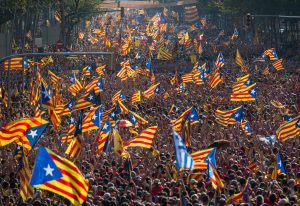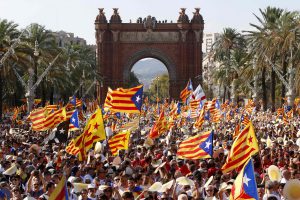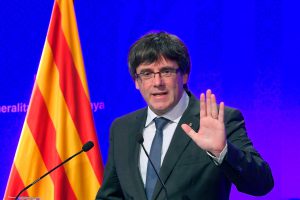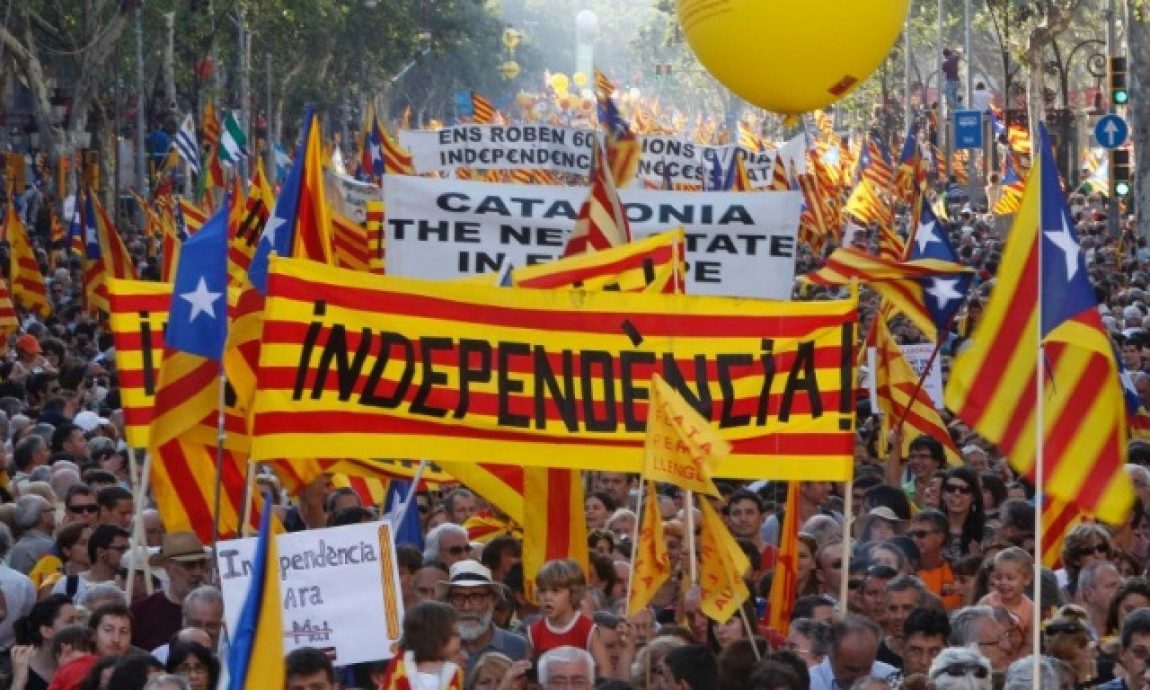If you’re visiting Catalonia soon, maybe you’re wondering how safe the capital, Barcelona, is with all the events related to the region’s bid for independence. That’s why we’ve put together this post to explain in chronological order what exactly has happened and to shed a bit more light on the situation so that you can enjoy a more informed stay in the Catalan capital.
 A little bit of background
A little bit of background
In 2006, the parliament of Catalonia received approval from all political parties for a new statute of autonomy, collating all the Catalan laws. The Spanish Prime Minister, Jose Luis Rodriguez Zapatero of the PSOE (Working Spanish Socialist Party) promised to approve this statute but later broke his promise, removing many articles that other autonomous communities of Spain had in their statutes.
The PP (Popular Party) of Spain initiated a petition across the country to disapprove the statute, taking it before the constitutional court which annulled it, deciding it was unconstitutional in 2010. This provoked massive protests across the whole of Catalonia and marked the beginning of the surge in independence sentiment.
A vote to determine a referendum was held on Sunday 9th November 2014 to ascertain support on Catalonia’s political future. The ballot papers presented two questions: “Do you want Catalonia to become a State?” and “Do you want this State to be independent?” The second question could only be answered by those who had answered Yes to the first one.
The following day, the Catalan government stated that 2,305,290 votes had been cast overall. The estimated turnout was 41.6%, with 80.72% of voters answering yes to both questions, just over 10% answering yes for the first question and no for the second, and approximately 4.5% answering no to both questions.
The then Catalan leader Artur Mas declared the poll “a great success” and that his region’s people had “earned the right to a formal referendum”, adding that “once again Catalonia has shown that it wants to rule itself”.
The poll was met with strong opposition from the Spanish government.
11st September 2017
Catalonia’s national day: La Diada de Catalunya this year saw the citizens of Barcelona come out in their numbers to protest along the famous Passeig de Gràcia and Carrer d’Aragó, calling for the independence of Catalonia. The police claimed that 1 million people turned up in support of the cause, creating a ‘plus’ sign by holding banners above their heads.
 15th September 2017
15th September 2017
The referendum campaign: The publicity campaign for the referendum was carried out by the Catalan government between the 15th and 29th of September 2017. In spite of the fact that the government of Spain declared the act illegal, the campaign went ahead without any violent intervention from Spanish police forces, La Guardía Civil. However, what they did do was search various printer companies trying to find and confiscate ballot papers for the referendum. They also collected other campaign collateral, such as posters. The pro-referendum supporters made themselves present, albeit in a non-aggressive way, wherever the Spanish police intervened. The international press spoke about the passive manner of the demonstrators, who gave flowers and sang songs to the police agents.
1st October 2017
The vote: the actual referendum vote was organised by the Government of Catalonia. The government of Spain objected to the referendum, declaring it illegal according to the laws of the country’s constitution. In spite of the ban, however, the referendum took place. At this point, intervention from the Spanish police and government increased and the Guardía Civil reclaimed voting urns and ballot papers, battling to refuse entry to those trying to vote. Whilst the situation did reach a certain level of aggression, this was largely contained in voting stations and did not affect those elsewhere in the city.
3rd October 2017
General strike: on 3rd October various organisations and unions promoted a general strike of protest against the actions from voting day, which some Catalan people felt was political repression. The marches and protest carried out across the city on this day were still passive, sometimes even silent, and without incidents.
10th October 2017
Declaration of independence: due to the victory of the “Si” (pro) referendum campaign and the refusal of the Spanish government to negotiate, the Catalan government declared the region as an independent Republic. Within the same speech, the president of Catalonia left listeners in suspense by negating the declaration in attempts of creating the possibility of negotiation with the Spanish government.
21st October 2017
Article 155: On 21st October the Spanish government implemented Article 155, to replace Catalan government officials with Spanish ones to try to take control of the community of Catalonia. If this proves unsuccessful, other possibilities would be that the Catalan community calls for elections to vote in new leaders or to re-declare independence. In any of these cases, they say that they would be non-violent initiatives.
 The Spanish government issued numerous arrest warrants for various Catalan cabinet members, including the President of Catalonia, Carles Puigdemont, who fled to Belgium. All are now awaiting elections for a new Catalan government, due to take place on 21st December 2017.
The Spanish government issued numerous arrest warrants for various Catalan cabinet members, including the President of Catalonia, Carles Puigdemont, who fled to Belgium. All are now awaiting elections for a new Catalan government, due to take place on 21st December 2017.
With many factors in play and actions still pending, the outcome of the situation is far from clear, however, through all of this the city is still functioning as before, welcoming travellers and visitors from all over the world.
We hope that this article has given you a bit more information about the current situation in the Catalan capital, and conveyed how the acts related to the region’s bid for independence has been completely passive, not causing any disturbance to people who are visiting this incredible city.




Leave a Reply